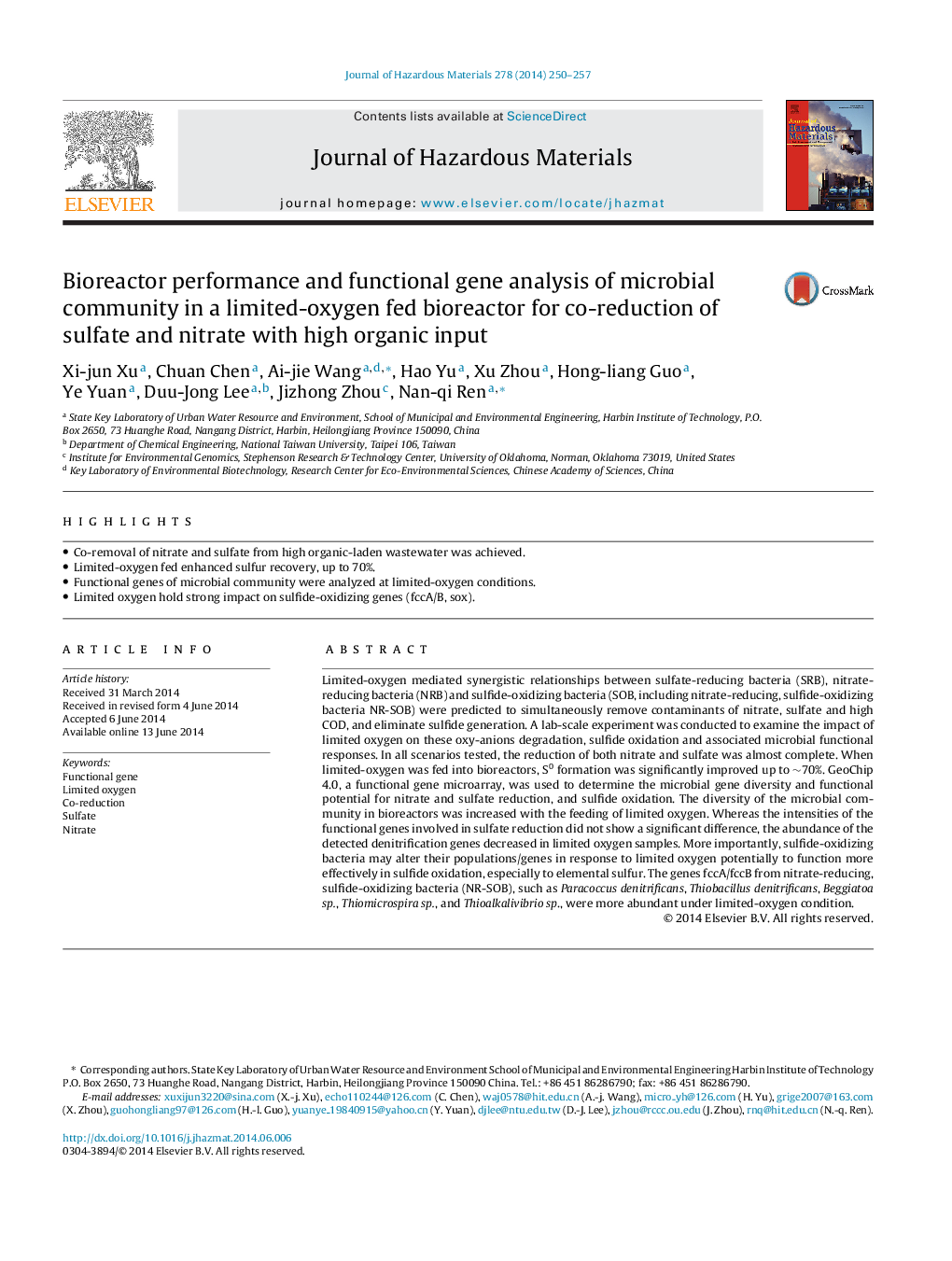| Article ID | Journal | Published Year | Pages | File Type |
|---|---|---|---|---|
| 576532 | Journal of Hazardous Materials | 2014 | 8 Pages |
Abstract
Limited-oxygen mediated synergistic relationships between sulfate-reducing bacteria (SRB), nitrate-reducing bacteria (NRB) and sulfide-oxidizing bacteria (SOB, including nitrate-reducing, sulfide-oxidizing bacteria NR-SOB) were predicted to simultaneously remove contaminants of nitrate, sulfate and high COD, and eliminate sulfide generation. A lab-scale experiment was conducted to examine the impact of limited oxygen on these oxy-anions degradation, sulfide oxidation and associated microbial functional responses. In all scenarios tested, the reduction of both nitrate and sulfate was almost complete. When limited-oxygen was fed into bioreactors, S0 formation was significantly improved up to â¼70%. GeoChip 4.0, a functional gene microarray, was used to determine the microbial gene diversity and functional potential for nitrate and sulfate reduction, and sulfide oxidation. The diversity of the microbial community in bioreactors was increased with the feeding of limited oxygen. Whereas the intensities of the functional genes involved in sulfate reduction did not show a significant difference, the abundance of the detected denitrification genes decreased in limited oxygen samples. More importantly, sulfide-oxidizing bacteria may alter their populations/genes in response to limited oxygen potentially to function more effectively in sulfide oxidation, especially to elemental sulfur. The genes fccA/fccB from nitrate-reducing, sulfide-oxidizing bacteria (NR-SOB), such as Paracoccus denitrificans, Thiobacillus denitrificans, Beggiatoa sp., Thiomicrospira sp., and Thioalkalivibrio sp., were more abundant under limited-oxygen condition.
Related Topics
Physical Sciences and Engineering
Chemical Engineering
Chemical Health and Safety
Authors
Xi-jun Xu, Chuan Chen, Ai-jie Wang, Hao Yu, Xu Zhou, Hong-liang Guo, Ye Yuan, Duu-Jong Lee, Jizhong Zhou, Nan-qi Ren,
